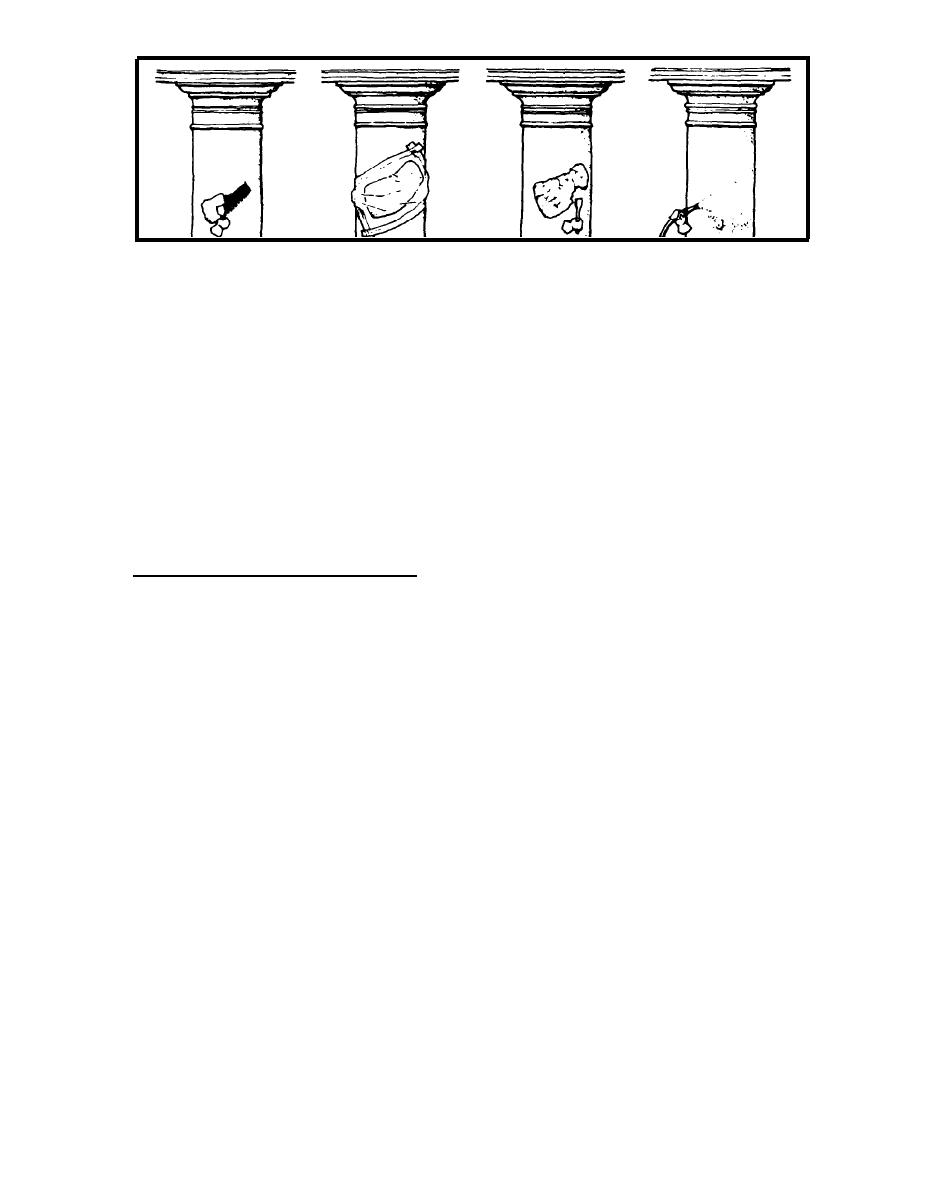

Custom Search
|
|

|
||
 Figure 4-13.
How to Apply a Poultice.
Absorbent material is applied to stain; the area is covered;
poultice is scraped off with wooden spatula; the surface is
rinsed with water.
(Source:
Dinu Bumbaru, Heritage Montreal Foundation)
made of a paint remover containing methylene chloride-based paint
remover mixed with talc, chalk, or clay as a thickening agent is
effective against felt tip marker ink. Anti-graffiti surface
coatings (e.g. , urethanes, acrylics, silicones) should be avoided
because they frequently change the appearance of the coated
surface and may even act as a primer for some markers.
Paint removal from masonry. Do not remove paint
unnecessarily.
Complete removal is usually a mistake, since the
paint was very likely put there for a good reason--perhaps to
protect soft or deteriorated brick or to hide sloppy original
masonry work. It may have been part of the original decorative
scheme for the building. Stripping it can damage the surface
beneath or speed deterioration. As a general rule, paint should
be taken down only to the first, tight, undamaged layer. In
removing paint, keep in mind that any building constructed before
1950 may contain lead paint. Lead-based paint removed by any
method is hazardous waste and must be disposed of accordingly.
Use proper precautions.
Before starting a stripping job, carefully remove paint from
several test patches in an unobtrusive section of the building to
see what problems may arise. The sequence of paints and paint
colors on a building is a part of its history. If all of the
paint is to be removed, the research necessary to determine the
original colors should be done before stripping. Keep as-is at
least one small section that contains every paint color as
historic evidence.
Badly peeling surfaces that will be repainted should be
prepared by hand, using natural bristle or nylon brushes and hand
scrapers to remove only the deteriorated paint. Trisodium
phosphate (TSP) in water is a good cleaner if you are planning to
repaint a basically sound surface, as it softens and removes the
old top layer, leaving a deglossed surface.
4-22
|
 |
|
 |
||